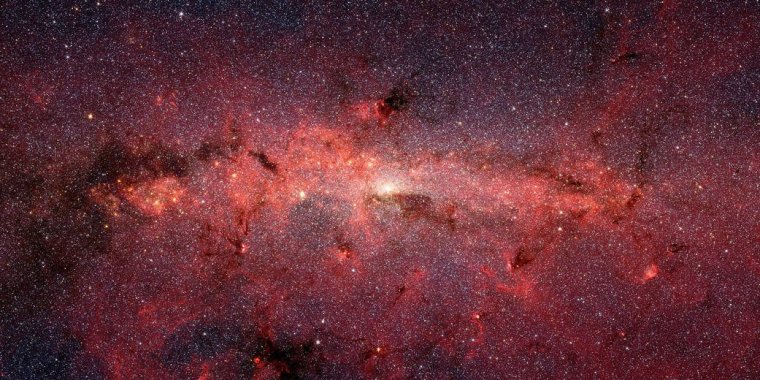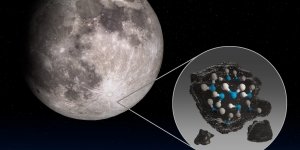| News / Space News |
‘Fossil Galaxy’ Found Hidden Inside of Milky Way
Another galaxy was absorbed into our own after colliding with the Milky Way some 10 billion years ago, astronomers have revealed.

The Milky Way’s Center. Image Credit: NASA, JPL-Caltech, Susan Stolovy (SSC/Caltech) et al.
The discovery of the long-dead galaxy could change our understanding of the history of the Milky Way, and how it became the vast web of stars that surrounds us today, Independent reported.
The fossil, known as Heracles, is thought to have collided with the Milky Way 10 billion years ago, when our galaxy was still at a very young age.
Its remnants make up about a third of Milky Way's spherical halo, researchers report. But despite its vast scale, astronomers were not able to see it until they uncovered detailed information about tens of thousands of stars.
Dr Ricardo Schiavon, of Liverpool John Moores University's Astrophysics Research Institute, said: "To 'catch sight' of that galaxy is awesome.
"It is really small in the cosmological context - only 100 million stars - but accounts for almost half the mass of the entire Milky Way halo."
A team of astronomers led by Dr Schiavon analysed the data from the Apache Point Observatory Galactic Evolution Experiment (Apogee) project, which has amassed large amounts of information on more than half a million stars across the Milky Way.
Dr Schiavon said: "To find a fossil galaxy like this one, we had to look at the detailed chemical make-up and motions of tens of thousands of stars.
"That is especially hard to do for stars in the centre of the Milky Way, because they are hidden from view by clouds of interstellar dust.
"Apogee lets us pierce through that dust and see deeper into the heart of the Milky Way than ever before."
To separate stars belonging to Heracles from those of the original Milky Way, the team used Apogee instruments to measure the chemical compositions as well as the velocities of the stars.
Danny Horta, a graduate student at Liverpool John Moores University, said: "Of the tens of thousands of stars we looked at, a few hundred had strikingly different chemical compositions and velocities.
"These stars are so different that they could only have come from another galaxy.
"By studying them in detail, we could trace out the precise location and history of this fossil galaxy."
Based on their findings, the researchers say the collision between Heracles and Milky Way "must have been a major event in the history of our galaxy".
They believe this makes the Milky Way unusual because "most similar massive spiral galaxies had much calmer early lives". (Tasnim News Agency)
YOU MAY ALSO LIKE





